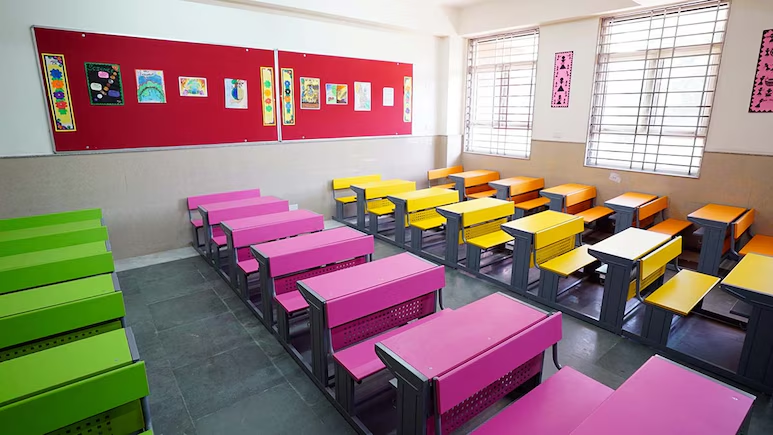
The Ministry of Education's Students' Learning Enhancement Guidelines issued today suggest measures to ensure inclusive learning during and after COVID-19. As per the guidelines, in remote areas where internet connectivity and electricity is poor, several states and union territories have come up with innovative initiatives (TV and radio programmes), however, there exists a major portion of learners who do not have access to digital devices. The Department of School Education and Learning has asked the states to provide statistics regarding various heads to devise a strategy accordingly.
The ‘Students' Learning Enhancement Guidelines' were framed by the National Council of Education Research and Training (NCERT) for students with or without the digital devices including television and radio to continue learning while schools continue to remain closed to prevent the spread of COVID-19. The new guidelines suggest a continuous learning plan for each child of each class with special reference to their accessibility to resources.
As per the information provided by states, only 19 states have plans to map children of migrant labourers and provide them with admission and opportunities for continuous learning while only 16 states and union territories have adopted the alternative academic calendar of NCERT by translating it in the required language.
Continuous Learning Plan And States and Union Territories
As many as 25 states and union territories have prepared a school-based continuous learning plan for each and every learner based on the requirements of resources by each learner, while only 22 states and union territories include a plan for providing resources for continued learning of children with special needs. Students of as many as 19 states and union territories have received textbooks under the current academic session.
The data provided by states and union territories reveal that only four states have 100 per cent students have access to different digital devices including smartphones, television, radio, personal computers and community computers for the purposes of continuing schooling from homes.
It also reveals only nine states and union territories have arranged television sets at local community centers for learners and 11 have tied up with citizen service centers located in both, rural and urban areas.
As many as nine states and union territories have even distributed digital devices through samagra shiksha, state funding, corporate social responsibility, community pooling or donations to students from EWS category.
